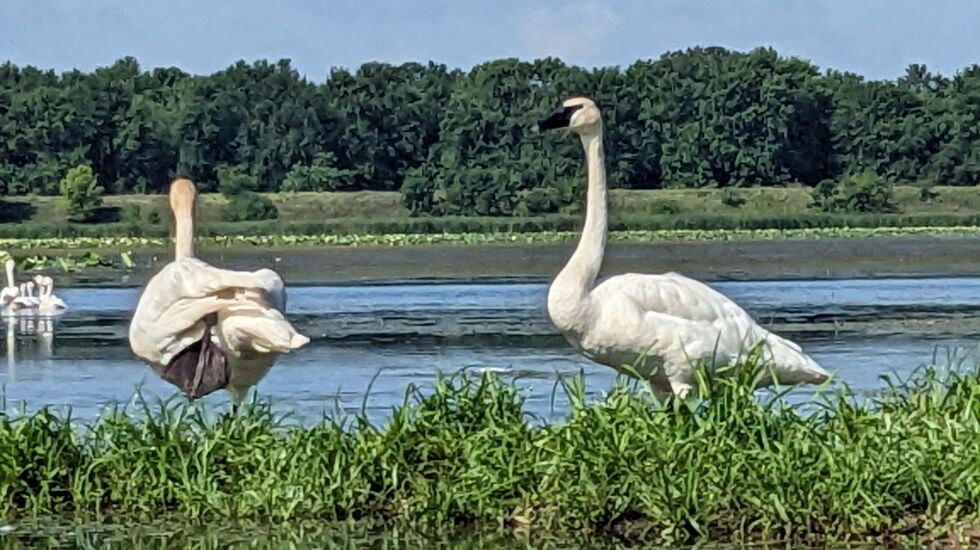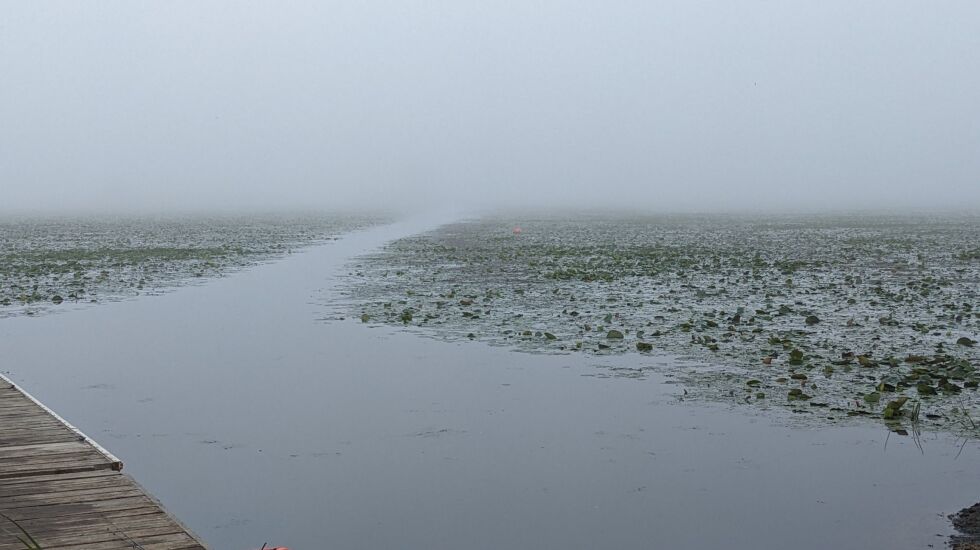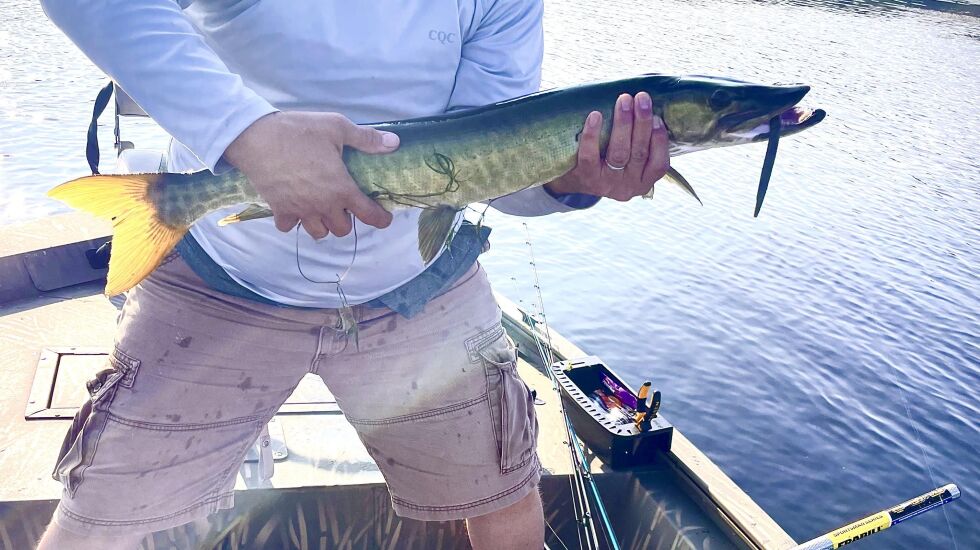
HENNEPIN, Ill. — Boat trails were etched into sprawling lotus and matted aquatic vegetaton in July when I fished Hennepin-Hopper lakes for the first time in years. I paddled within feet of trumpeter swans; an otter swam off the bow of my kayak; a beaver of more than 50 pounds thrashed wildly on the other side of thick lotus.
Since then, I’ve returned twice.
Partly because Hennepin-Hopper is great for kayak fishing; in reality, it’s to enjoy the whole of The Wetlands Initiative’s Sue and Wes Dixon Waterfowl Refuge.

Hennepin-Hopper began as 2,700 acres. Now Dixon Refuge is “a 3,000-acre mosaic of lakes, marsh, meadows, prairie, savanna, and woodlands” on a former floodplain by the Illinois River, south of Hennepin.
It’s a Ramsar Wetland of International Importance with rare birds regularly. Recently, a roseate spoonbill was hanging around. Gene Jarka, an angler from Princeton, took his photographer wife out to see it this week, as have other birders.
Hennepin-Hopper drew me with its unbelievable fishing when it opened. Since then, I’ve appreciated its full outdoors experience. I’ve done a bioblitz. If nearby (Dixon Refuge is a 2 1/2-hour drive from Chicago), I stop by to climb the tower or hike the trails.

Pumpkinseeds were my initial target this summer. Refuge manager Rick Seibert thinks the world-record swims there. Robert Warne’s caught the world-record (1 pound, 8 ounces) May 23, 2016 in Honeoye, New York, according to the International Game Fish Association. Nicholas Rolando caught the Illinois-record (1-1.92) June 19, 2020 from Hennepin-Hopper.
“They’re a tough bite now,” Seibert said. “The big ones get in the weeds and seldom come out. For the big bluegill and pumpkinseeds, there are guys fishing in the lotus with cane poles.”
Not sure that would work with a kayak.
The refuge has special regulations for anglers (wetlands-initiative.org/dixon-paddling-fishing): “NO gas-powered motors are allowed on boats even if raised and out of the water. Only electric trolling motors are allowed;” no shore fishing; “NO live bait is allowed except for red worms, wax worms, and night crawlers;” fishing is restricted to the designated area; usage is limited to the 40 parking spots. Hours are sunrise to 30 minutes after sunset.
Not everyone is enchanted with panfish, for them the draw is largemouth bass, northern pike and muskie. Multiple anglers I talked with caught largemouth in the 5-pound range and multiple muskies.
“Cloudy days are best,” Seibert said and recommended long casts to not spook fish in the clear water.
He said largemouth were caught to 6 pounds and one angler already caught and released 105 muskies this year.
From the first I fished it mid-summer to last week, the lake changed rapidly with lotus and aquatic vegetation dropping back.
“It is not unusual to see musky swimming in front of your boat while navigating the main channels, and while the average size seems to be in the 29- to 30-inch range, larger fish are patrolling the shallow water,” Jarka emailed. “They are hitting just about anything. I caught one on a Senko and another on a 3/4-ounce Johnson Silver Minnow, while other anglers are throwing traditional in-line spinners.”

Seibert thinks the tiny young-of-the-year bass swimming all over by late summer has “everything eating them and I think they get so full they’re hard to catch.”
He suggested, as the aquatic plants keep dropping back, fishing open pockets on the east shore, reachable with a kayak.
Last week, as I pulled out, a plains leopard frog jumped into my kayak (a hefty hop for a frog of less than an inch).
It was time.
Or not, I hope to visit twice before the final fishng day Sept. 4.
Information is at wetlands-initiative.org/dixon-location-and-visiting.








